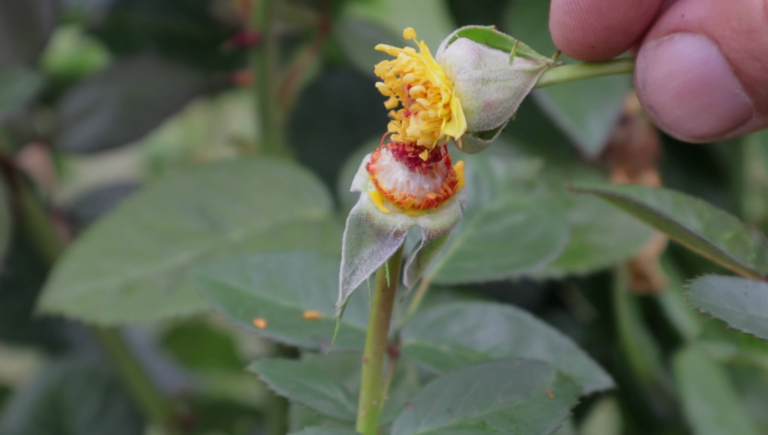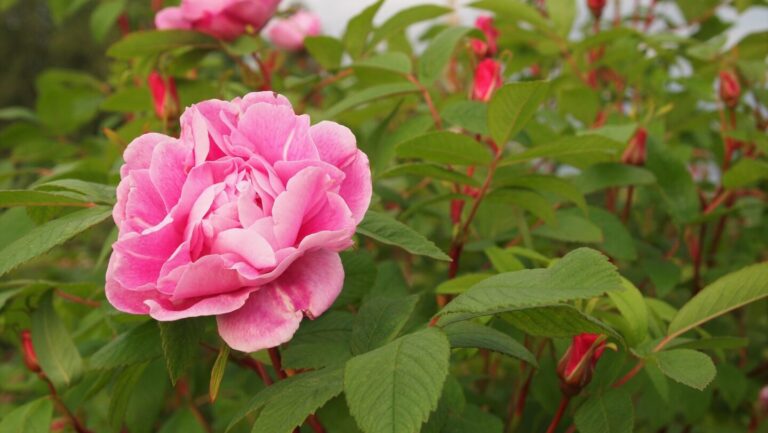Roses, known for their timeless beauty, have evolved into various classifications to suit diverse gardening needs. Two of the most recognizable types are floribunda and hybrid tea roses. Jason, a professional rose grower at Fraser Valley Rose Farm, delves into the key distinctions between these two popular rose classes, their defining traits, and notable varieties to help gardeners make informed choices.
Core Differences in Form and Flowering
The defining distinction between floribunda and hybrid tea roses lies in their flower arrangement and form. Floribundas are celebrated for their cluster flowering habit, where multiple blooms form on a single stem. Their blooms are typically more open, creating a soft, rounded appearance. In contrast, hybrid tea roses are known for their solitary blooms, often showcasing the iconic high-centered form associated with florist roses.
Floribunda blooms are generally smaller, averaging between two to three-and-a-half inches in diameter, while hybrid teas boast larger flowers, ranging from three-and-a-half to six inches. These size differences often contribute to their unique appeal in garden settings.
Growth Habits and Shrub Characteristics
Floribundas tend to grow in a bushy, compact form, averaging around three feet in height. Their thinner stems and rounded shape make them suitable for landscape use and mass plantings. Hybrid teas, on the other hand, typically grow taller—reaching up to four feet—and exhibit a more upright and structured form with thicker stems.
Cold Hardiness and Disease Resistance
When it comes to cold tolerance, floribundas generally hold the advantage. They can thrive in zones as low as USDA Zone 5, with some varieties going even lower. Hybrid teas are less hardy, with many varieties suited to Zones 6 or higher. Additionally, floribundas are often more disease-resistant, making them easier to grow in a variety of conditions.
Color Range and Fragrance
Both rose classes offer a stunning array of colors, ensuring versatility in the garden. Hybrid teas, however, are more frequently noted for their strong fragrances, making them a favorite among rose enthusiasts. Floribundas, while not always as fragrant, compensate with their ability to bloom prolifically throughout the season.
Notable Varieties of Floribunda Roses
Jason highlights several iconic floribunda varieties:
- ‘Julia Child’: A butter-yellow rose with a unique licorice fragrance, compact growth, and season-long blooms.
- ‘Iceberg’: Renowned for its versatility, this white rose has produced numerous sports, including ‘Brilliant Pink Iceberg’ and ‘Burgundy Iceberg.’
- ‘Angel Face’: Known for its mauve coloring and ruffled blooms.
- ‘Nicole’: A striking bi-color rose with white petals edged in pink.
- ‘Bonica’: A favorite for its adaptability in mass plantings, featuring pink blooms that fade gently.
- ‘South Africa’: A warm-toned orange floribunda with excellent garden performance.
Notable Varieties of Hybrid Tea Roses
For hybrid tea roses, Jason discusses these standout examples:
- ‘Chicago Peace’: A vivid variant of the classic ‘Peace’ rose, featuring bold pink and orange tones.
- ‘Double Delight’: A bi-color rose with a captivating fragrance, ideal for warmer climates.
- ‘Stephen’s Big Purple’: A beetroot-purple rose with a knockout scent, bred by an amateur enthusiast.
- ‘Pope John Paul II’: A pure white rose perfect for cut flowers and gardens alike.
- ‘Fragrant Cloud’: A richly fragrant rose with unique salmon-coral coloring.
Overlapping Classifications and Genetics
The distinctions between floribundas and hybrid teas aren’t always clear-cut. Floribundas owe their cluster-flowering trait to their genetic connection with polyantha roses, while hybrid teas are derived from different lineage combinations. The interbreeding of these classes has also led to the creation of grandiflora roses, which exhibit traits of both floribundas and hybrid teas, further blurring the lines.
Shrub Roses: A Category Beyond
While floribundas and hybrid teas dominate modern rose classifications, many roses that don’t fit neatly into either category are grouped under shrub roses. This includes most of David Austin’s English Roses, which combine old-world charm with modern performance.
Conclusion
Choosing between floribunda and hybrid tea roses often comes down to personal preferences and garden requirements. Floribundas are ideal for vibrant, low-maintenance landscapes, while hybrid teas appeal to those seeking larger, more fragrant blooms. Understanding the unique traits of each class helps gardeners cultivate roses that best suit their aesthetic and practical needs.






